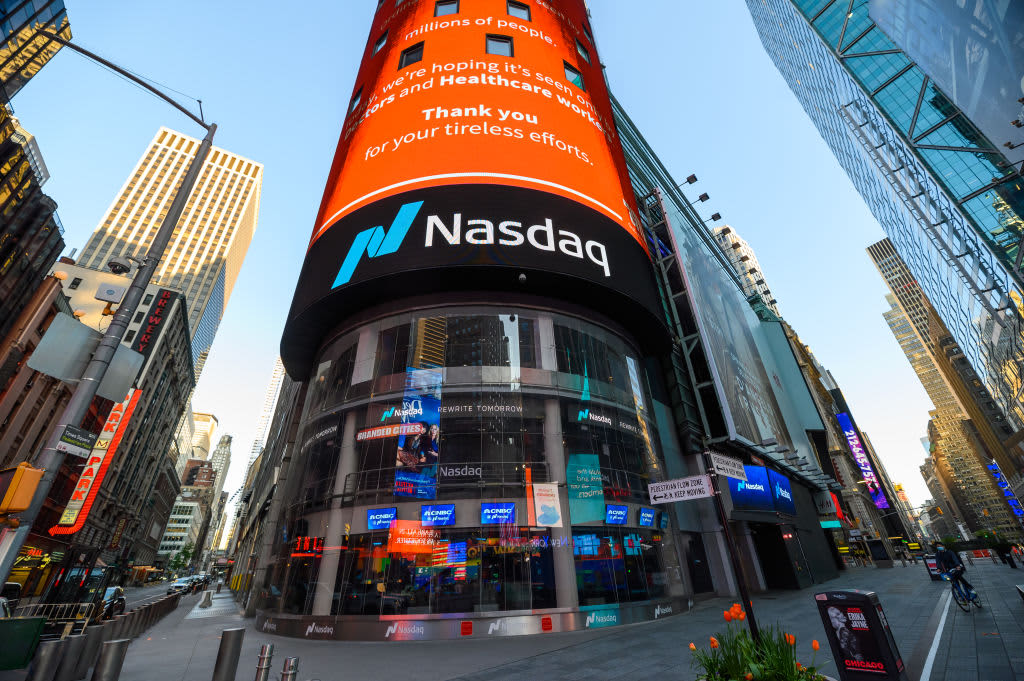S&P 500 futures rise slightly in volatile trading as election results roll in without a clear winner

S&P 500 futures rose slightly in volatile trading Wednesday as results of the presidential election rolled in without a clear winner yet. Futures for the Nasdaq 100 index, home to many tech stocks, outperformed, but broader market gains were capped as both candidates claimed they were on pace to winning.
S&P 500 futures gained 0.6%. Dow Jones Industrial Average futures alternated between sharp gains and losses. At around 12:51 a.m. ET, they were flat. Nasdaq 100 futures traded 2.2% higher. Earlier in the session, those contracts were up more than 3%.
As the night goes on, it’s becoming less likely that there will be a call in the presidential race on election night.
Democratic nominee Joe Biden appeared to be unable to take North Carolina, with President Donald Trump holding a lead in that state, according to NBC News. However, Biden was leading in Arizona, although NBC News said it was too early to call the state. Key swing states Michigan, Wisconsin and Pennsylvania could take days to determine.
“We believe we’re on track to win this election,” Biden said to supporters in Delaware overnight. The candidate said the winner could be known Wednesday morning but it could take a little longer.
Meanwhile, Trump tweeted: “We are up BIG, but they are trying to STEAL the Election.”
So far, Trump will win the presidential vote in Florida, Indiana and Kentucky along with South Dakota, Arkansas and Ohio, NBC News projects. Trump is also projected to win Alabama and North Dakota. Biden is projected to win Vermont, Delaware, Maryland and Massachusetts as well as Colorado, New York and Virginia, according to NBC News.
Investors were also watching to see if Republicans would maintain their majority in the Senate.
Other financial markets markets were gyrating as results came in:
- Bonds reversed higher, with the yield on the 10-year Treasury note falling to 0.81%. (Yields move inversely to prices.)
- Futures for the small-cap benchmark Russell 2000 dipped 0.4% after rising earlier.
- The U.S. dollar index gained 0.4% after falling earlier. The greenback also hit its highest level since Oct. 2 against the Chinese yuan.
- U.S. oil futures gained 1.9%.
“We’re seeing in one night what we’ve seen over the past two weeks, which is a tug of war within the polling itself causing wide swings in the market as uncertainty persists,” said Keith Lerner, chief market strategist at Truist/SunTrust Advisory.
Treasury Secretary Steven Mnuchin told CNBC’s Kayla Tausche a couple hundred attendees were watching the election results come in at the East Room, calling the mood “great.”
During Tuesday’s regular trading, the Dow popped more than 500 points, or 2.1%. The S&P 500 gained 1.8%, and the Nasdaq Composite advanced 1.9%. Those gains added to Monday’s strong performance.
This week’s market moves come as investors hoped a delayed, or contested, U.S. presidential election result would be avoided and a clear winner would emerge Tuesday night.
“This most recent uptick in prices seems to be a ‘clarity rally’ as investors look forward to finally having the election uncertainty overhang removed,” Adam Crisafulli, founder of Vital Knowledge, wrote in a note Tuesday.
Biden was ahead of Trump in the polls leading up to Tuesday. Wall Street is also watching some key races to see which party gains control of the Senate. Republican Sen. Joni Ernst is projected to win the Iowa Senate race.
Some investors were betting on a so-called blue wave, a scenario in which Democrats win the White House and retake a Senate majority. Some of those investors had been rotating out of tech stocks on the notion that Democrats would institute higher taxes that would hit those shares. The theory is that investors would sell winning tech stocks before higher capital gains taxes were implemented. A Trump win, or Republicans maintaining a Senate majority, would make that scenario less likely.
The S&P 500 lost 0.4%, on average, the day after presidential elections, according to Baird.
Chao Ma of the Wells Fargo Investment Institute thinks investors with a longer time horizon should not worry too much about the election’s impact on the broader market.
“The history of the economy and the S&P 500 Index suggests that a president’s party affiliation has made little difference when it comes to long-term returns,” said the firm’s global portfolio and investment strategist. “The long-term drivers of the S&P 500 index have been the economy and business earnings, and we expect that to continue to be the case … beyond the 2020 elections.”
One year out from a presidential election, the S&P 500 averaged a return of more than 8%, according to the Baird data back to 1960.
—CNBC’s Pippa Stevens contributed to this report.
Subscribe to CNBC PRO for exclusive insights and analysis, and live business day programming from around the world.




